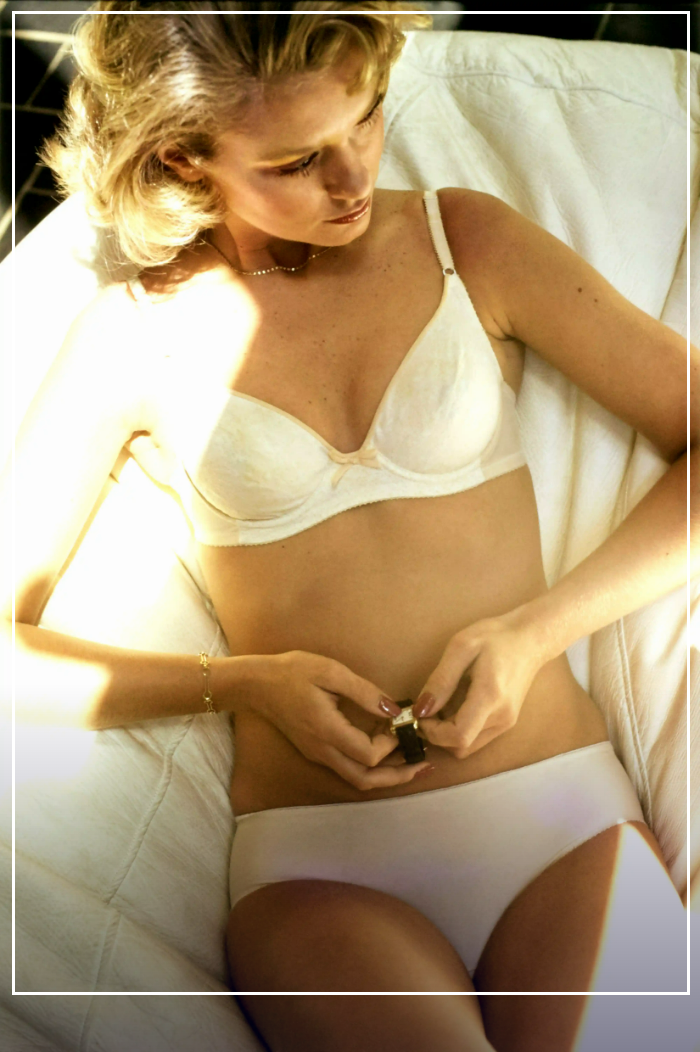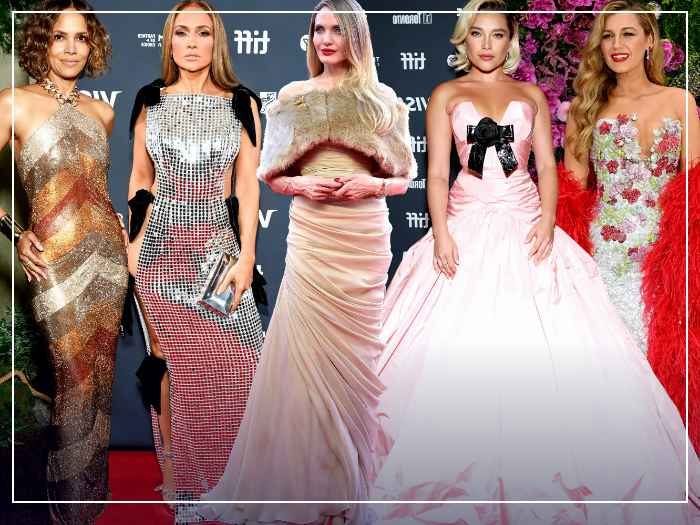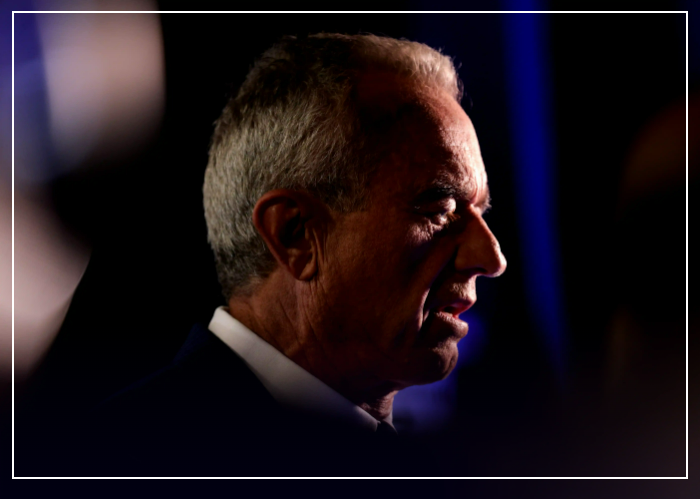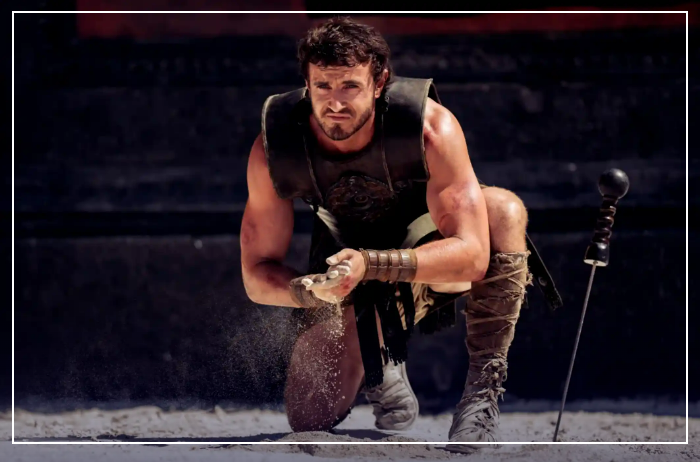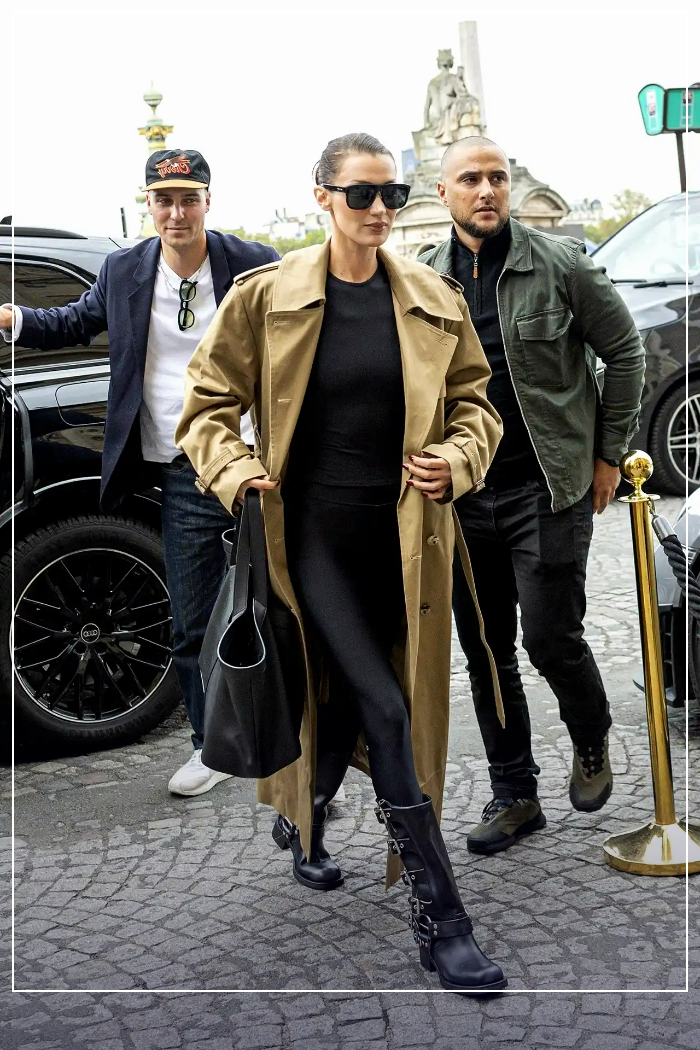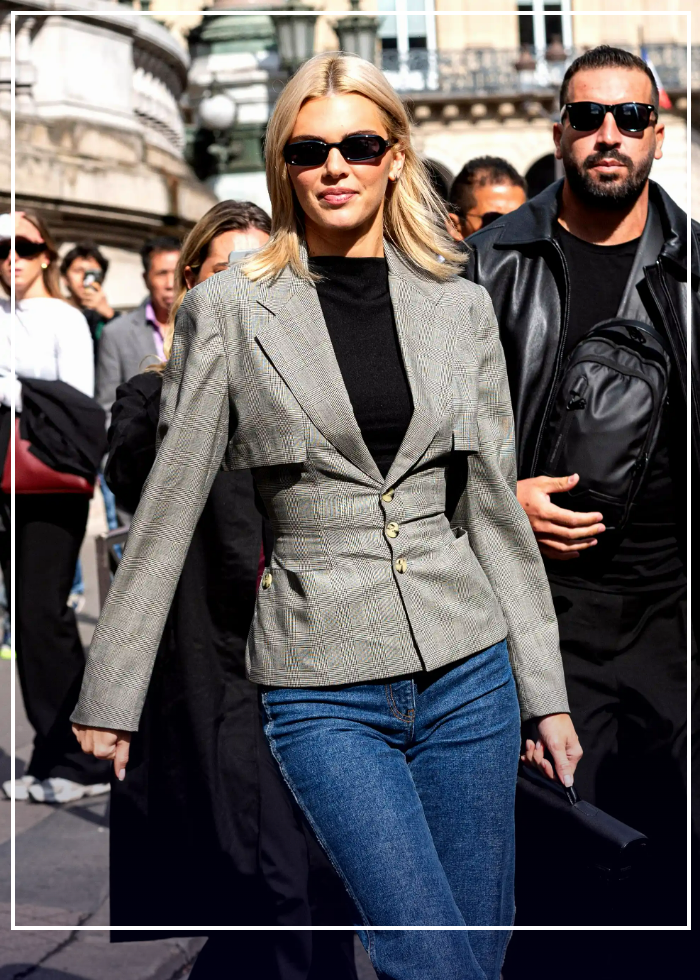Learning how to measure bra size correctly is not just a matter of function. After all, wearing the right bra can elevate your entire appearance—no pun intended. “It helps your clothes look good and it gives you confidence, Emily Blundell, founder of British lingerie brand Bluebella says. “It’s really worth the time and attention.”
Sounds simple enough. But, as Blundell also notes, finding the right bra is often easier said than done: “The majority of women wear the wrong bra size.” She’s not exaggerating; studies have found that up to 80% of us are wearing an ill-fitting bra.
Want to transcend the statistic? We’ve broken down everything there is to know about finding the right bra—including how to measure yourself at home, how to adjust the bra for a perfect fit, and what to look for in terms of the proper style to flatter your unique shape and size.
The importance of fit
While a good bra can—and should—go completely unnoticed, an ill-fitting bra can become be a huge distraction. Who among us hasn’t spent a day tugging at our straps, re-adjusting a too-tight band, or suffering from annoying underwires poking at our ribs? Wearing a bad bra can come between you and a productive work day, a great night out, and even just a casual stroll down the street.
Some other signs that your bra doesn’t fit properly can be more serious. Many women complain of shoulder pain, back pain, breast pain, nipple pain, neck pain, and chafing skin—all just from wearing the wrong bra. Some research suggests that an ill-fitting bra can even cause tension headaches and bad posture.
Where to begin
Unfortunately, far too many bras fall into the aforementioned categories. To compensate, many of us end up buying more bras—and often, those go unworn. “It is not uncommon for people to swap between just two bras despite owning between 10 and 20 of them,” explains Kelly Dunmore, chief lingerie stylist at Rigby & Peller.
One common cause for all this discomfort and wasted money? Simply forgetting that our bodies change over time. Many of us easily make the mistake of neglecting to re-check and re-measure our bra size periodically. Pregnancy, weight fluctuations, exercise, hormonal changes, breastfeeding, water retention, and age can all impact the way our bras fit. To ensure you’re always wearing a bra that fits well, experts recommend getting a bra fitting or re-measuring yourself every six months.
Of course, it’s also important to note that bra size can largely depend on the bra itself; just like dresses, skirts, and pants, sizing can differ from brand to brand. Other factors that may effect the way a bra fit include the fabric, strap style, cup shape, padding, underwire, and overall silhouette.
How to measure bra size at home
That said, there are two basic measurements to know that will guide you well: your band size, and your cup size.
Band size is the measurement of the circumference of your rib cage just below your breasts in inches. It is usually an even number ranging from 28-52.
Cup size is the difference between the band size and the measurement around the most ample part of your bust; it’s denoted by a letter A-K. Though there are many bra-size calculators and even virtual bra fittings available online, you can easily measure yourself at home using a measuring tape and the following method. If you don’t have a tape measure, Jennifer Zuccarini, founder of Fleur du Mal, says you can print one out online on a regular paper “in a pinch.”
Keep in mind that there is no “normal” when it comes to bust size. As mentioned, breast size fluctuates throughout our lives and phases, but overall breast size is largely determined by genetics.
Recent data shows that globally, the average bra size is 32A, but average bust size differs according to country. For example, in the United States the average bra size is 40C; in Norway it is 38D; in the Bahamas it is 36AA.
How to measure your bra band size
First, stand upright without a bra on and measure around your back and under your bust, where the band of a bra would usually sit. Make sure the tape is going around in a steady, even line. It should feel snug, but not tight. Once you’ve placed the measuring tape correctly, take note of the circumference in inches. If you land at an even number, that is your band size. If it’s an odd number, round it up to the nearest inch to find your size.
How to measure your cup size
To measure your cup size, most retailers recommend you wear your current favorite (i.e. most comfortable) non-padded bra—you want your breasts held in place. Then, measure around the fullest part of your chest.
Once you have your bust measurement, you can subtract the numer from your ribcage measurement. The difference in inches denotes your cup size. 0 inches=AA; 1=A; 2=B; 3=C; 4=D; 5=DD; 6=F; 7=FF; 8=G; 9=GG; 10=H; 11=HH; 12=J; 13=JJ; 14=K and so on.
Next, combine your band and cup size so that you have a number followed by a letter, for example: 36D. This is your benchmark bra measurement to use as a starting point.
Just remember: there’s a whole lot of nuance involved in finding the perfect fit. It’s not unlike figuring out your style, silhouette, and fabric preferences in other forms of clothing.
How do to know if your bra fits correctly
After you’ve learned how to measure bra size, the best thing to do is try on some bras in person. You’ll need to adjust the straps and band size, but as Miryha Fantegrossi, vice president of merchandising and design at lingerie brand Wacoal, says: “Once you’ve fully adjusted the garment, you really shouldn’t feel like you’re wearing anything.”
Below are some tips to help you get to that glorious point.
Use the center hook
Start by cinching the bra in the back using the brand’s center hook. “That way, you have space if you need things to be a little tighter or looser,” explains Zuccarini.
The band provides 80% of a bra’s support–so if it’s too loose, it’s not going to hold your breasts in prime position. Instead, it should fit flush to the body.
“You shouldn’t be able to pull [the band] more than an inch or two away,” says Bendell. Conversely, don’t be alarmed if your band feels tight at first. “As soon as you wear it for one day, it’s going to loosen up, so we suggest that you fit your bra on the snugger side—but not so tight that it feels uncomfortable,” says Zuccarini.
Adjust the bra straps
You’ll also want to adjust the straps so they are snug, but not cutting into your shoulders. “You should be able to slide one finger underneath the strap, but not lift it up,” says Fantegrossi.
And remember, bra straps are meant to offer security and support—but that’s not their entire job; the whole bra contraption is meant to work in tandem. Thus, it’s important to get the band size right first.
“If the band is too loose, it means the straps are doing too much work. I often say to people, ‘Do you get marks on your shoulder when you take your bra off at night? Well, that’s because your band isn’t tight enough, and so the straps are giving you the support instead,’ which is a mistake.”
Check for bulges
Now, do a 360 degree check; lift up your arms; and move around. Trying a fitted T-shirt over the bra is also a good move. “If you can see lines or bulging skin, you know it’s not the right size,” notes Emilie Moraes, resident expert at Harvey Nichols.
Check the center
The bridge, sometimes called the gore, is the centerpiece of the bra where the two cups join. “In an ideal world, you want that to sit as close to the sternum as possible,” says Kelly Dunmore, chief lingerie stylist at Rigby & Peller. If it isn’t holding in place, try going down one band size or up a cup size. Alternatively, try a plunge bra, which usually has a narrower center front.
Assess the overall fit
If you look at yourself sideways in a mirror, your breasts should sit midway between your shoulders and elbows. A too-high or too-low bustline can really change the way your clothes fit, so you definitely want to make sure the positioning is correct.
Also, note your general comfort level: “The strap should feel like you’re getting support and lift, and you should fill up the cup, but there should not be digging in or a double-boob kind of thing–that means the cup is too small,” says Zuccarini.
How to fix common bra fit issues
How to stop bra straps from falling down
Most bra straps are made from stretchy or slippery material and thus should be adjusted and re-checked every three to four times you wear your bra, as well as after washing. And, in case you were wondering, hand washing and air drying on a flat surface is the best preserve your bra’s elasticity.
That said, if you find yourself continually adjusting your straps to lift your bust, revisit your band size. If your straps consistently slide off your shoulders, it might be because your shoulders slope downwards. In this case, move towards a racerback style.
How to stop the bra band from riding up in the back
If the band is riding up on a new bra, try loosening the straps, or changing to a tighter hook. If that doesn’t work, you will need to go up a band size. Bear in mind that when you increase band size, you might need to go down a cup size (so if your 34C bra is riding up, try a 36B).
How to know if your bra is too tight
If your bra is leaving marks on your skin, don’t stress—it doesn’t necessarily mean your bra is too small. However, if you’re uncomfortable or experiencing pain, pinching, or chaffing, consider re-checking your band size or increasing the width of the band at the back by using the first hook.
Why are my boobs spilling over my cups?
Spillage usually happens if you’ve reduced your back size, or if your boobs aren’t oriented the way your bra wants them to be.
Don’t be afraid to actually get in there and manually adjust your breasts; during a store fitting, it is not uncommon for the stylist to direct you to move your breasts from the outer sides up and inward in the cups to get a proper fit. Sometimes getting the proper bra fit really does come down to the way your breasts are positioned in the bra, so making manual adjustments truly can make all the difference.
If that doesn’t work, either increase the cup size or look to a wider wire shape for greater containment. Everyone’s breast shape is different and cup shapes vary.
What to do if your breasts don’t fill the cups
Gaping cups can often be fixed by tightening the band to cinch the wire under the breast tissue and bring the cup closer to your body. Again, don’t be afraid to get in their and rearrange your breasts to position them correctly.
If that fails, tightening the straps may also help. If that doesn’t feel or look right, you will need to go down at least one cup size.
What is the best bra style for my shape?
As mentioned, every breast shape and body shape is unique. However, “you should be able to wear almost any type of bra—as long as the bra is engineered correctly,” says Zuccarini. It truly is a matter of trying on different styles and noting the ones that work best for you.
Of course, different bra designs offer varying styles of support, so ultimately your perfect bra will reflect your preferences. “You might have two women that are the same bra size, but they carry the volume in their busts in different places, and that also changes through your lifetime, so you’ll find certain shapes suit you better.”
The best bra styles for round breasts
If you’re someone with a rounded bust, a balconette bra or demi bra often feel the most comfortable, with their thicker straps and more supportive underwiring. A T-shirt bra is also a great option for most breast shapes, including round.
The best bra styles for bell or drop shaped breasts
Breasts with a fuller base may benefit from full-coverage bras with straps that are closer together; avoid demi-cups and demi-bras. Those with larger busts may want to try a “minimizing” bra, which helps distribute volume correctly and provides adequate coverage and support.
Best bra styles for wide busts
If your breasts are fuller at the sides, choose a deep-V bra; its angled cups prevent gaping. Racerback tank tops or bras with criss-cross straps are also good choices.
Best Bra Styles for Small Breasts
For those of us who need a smaller size, consider wireless bras or tank top styles. Not only are they incredibly comfortable, they provide the right amount of support and follow the natural shape of your breasts.
Which stores carry bras in my size?
Once you follow the above tips, you can find a new bra size perfect for you, but it is not as easily available in stores as your old bra. Thankfully, increased awareness of correct measurements means that the demand for smaller back sizes and larger cup sizes, and vice versa, is constantly growing.
Those with a larger bust size than what is typically available in stores should look for styles from Evelyn & Bobby, Freya, Bezza and Bravissimo.
In contrast, bra brand Pepper offers bras in smaller sizes, while ThirdLove offers a range of bras for those with asymmetrical breasts.
Other favourite online bra and lingerie brands are Honeylove, Bare Necessities, Intimissimi, Skims and CupUp, which offer a variety of fits and styles to suit different sizes, shapes and needs.

